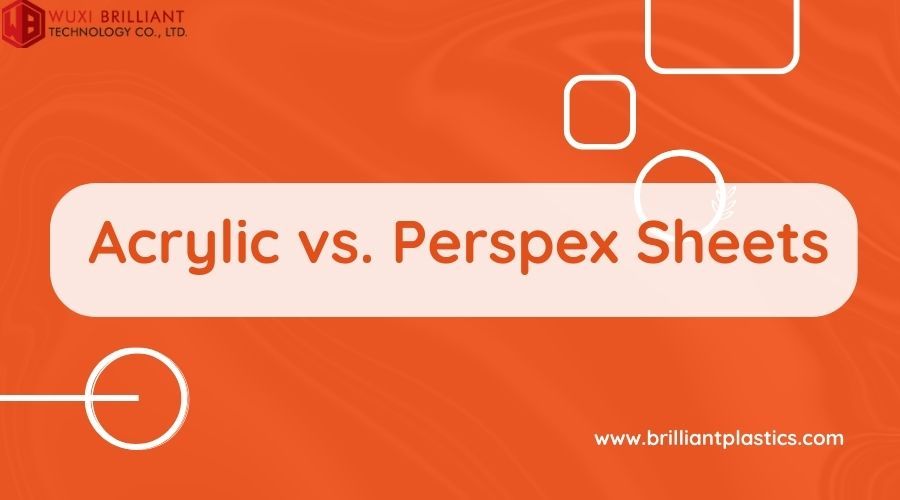
When it comes to transparent materials, acrylic sheets and Perspex are two popular choices that share many similarities but also have key differences. Both are commonly used in various applications due to their versatile nature, but it's essential to grasp the nuances between them to make informed decisions for specific projects.
Acrylic: Acrylic, also known as polymethyl methacrylate (PMMA), is a type of plastic material that has gained immense popularity as a substitute for traditional glass. Its versatility, clarity, and wide range of applications have made it a preferred choice in industries such as construction, signage, and design.
Perspex: Perspex is a specific brand name for acrylic sheets. Essentially, Perspex is to acrylic what Xerox is to photocopiers—a brand name that has become synonymous with the generic term. The term "Perspex" is often used in the United Kingdom and some other regions, while "acrylic" is more prevalent globally.
• Acrylic: Acrylic sheets can be produced through various methods, including cell casting and extrusion. Cell casting, also known as cast acrylic, involves a process where liquid acrylic is poured into molds and allowed to harden. Extruded acrylic, on the other hand, is formed by pushing the material through rollers.
• Perspex: While Perspex is a type of acrylic, it is specifically associated with cast acrylic sheets. The casting process in Perspex results in a product with excellent optical clarity and high impact resistance.
• Acrylic: Refers to the generic term for the material.
• Perspex: A brand name associated with acrylic sheets, particularly cast acrylic.
• Acrylic: Exhibits high impact resistance, making it suitable for a wide range of applications.
• Perspex: Particularly known for its high impact resistance, making it a preferred choice for outdoor applications and situations where durability is crucial.
• Acrylic: Generally offers good UV resistance, suitable for both indoor and outdoor use.
• Perspex: The casting process in Perspex enhances its UV resistance, making it ideal for extended outdoor exposure.
• Acrylic: Known for its excellent optical clarity and light transmission properties.
• Perspex: The cast acrylic process in Perspex contributes to superior light transmission, making it an excellent choice for applications where clarity is paramount.
In summary, while acrylic and Perspex are often used interchangeably, understanding the key differences is crucial for selecting the right material for particular applications. Acrylic, as the generic term, encompasses a broad range of products, including Perspex. Depending on your project requirements, considering factors such as manufacturing process, impact resistance, UV resistance, and light transmission will help you make an informed decision.
In the end, whether you opt for acrylic or Perspex, you're choosing a versatile material that has revolutionized the way we approach transparency in various industries.
If you're looking for a cheaper alternative to plexiglass, you might consider exploring different types of acrylic sheets. While both acrylic and Perspex are versatile materials with similar properties, there can be variations in pricing based on the specific type of acrylic sheet.
For cost-effective alternatives, you may want to consider extruded acrylic sheets. These sheets are manufactured through a different process than cast acrylic, making them generally more budget-friendly.
No, Perspex and plexiglass are not the same, but there is often confusion because both terms are used interchangeably.
"Plexiglass" is a generic term for acrylic sheets, and it is commonly used in the United States. It can refer to sheets made through different manufacturing processes, including both cast and extruded acrylic.
Perspex sheets, which are a type of cast acrylic sheets, are used for a wide range of applications due to their versatile properties. Some common uses of Perspex sheets include:
1. Signage and Displays: Perspex sheets are popular for creating signage and display materials. Their optical clarity and ability to transmit light make them suitable for both indoor and outdoor signage.
2. Art and Design: Artists and designers often use Perspex sheets for various creative projects. The material is easy to shape, cut, and mold, making it suitable for sculptures, artistic installations, and other design applications.
3. Glazing: Perspex sheets are used as a substitute for glass in certain applications. They are more lightweight and impact-resistant than traditional glass, making them suitable for windows, skylights, and protective barriers.
4. Automotive Applications: The impact resistance and clarity of Perspex make it suitable for use in automotive applications. It can be used for windows, windshields, and other transparent components.